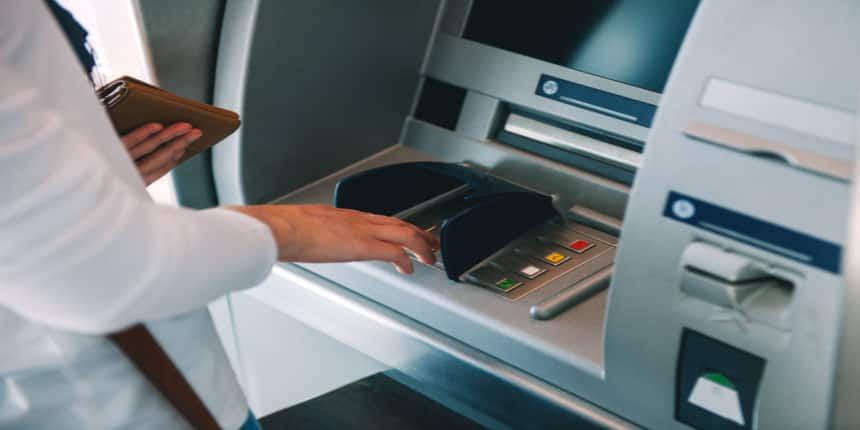ATM Full Form
What is the full form of ATM?
The full form of ATM is Automated teller Machine. The term ATM refers to a type of electro-mechanical machine that includes automated banking platforms and enables users to conduct simple financial transactions without the need for a branch employee or teller. Most ATMs should allow users with a debit card or credit card to make cash withdrawals. The use of ATMs is advantageous because they let users execute quick self-service operations such as cash withdrawals, deposits, bill payments, and account-to-account transfers. In most cases, the bank where the account is stored, the ATM operator, or both charge fees for cash withdrawals. Use an ATM that is run directly by the bank that holds your account to avoid some of these fees. Different regions of the world refer to ATMs as ABMs (Automated Bank Machines) or cash machines.
- What is the full form of ATM?
- History of ATM
- Types of ATM
- Working Principle of ATM
- Facts on ATM
- Advantages of ATM
- Disadvantages of ATM

History of ATM
Although there are records of a cash dispenser in Japan in the middle of the 1960s, the first ATM appeared at a Barclays Bank branch in London in 1967. The interbank transaction from the 1970s permitted a consumer to use their card from one bank at an ATM from another bank. In just a few years, ATMs had colonised every significant nation on the planet. These days, you can find them in tiny island states like Kiribati. At this time, there are more than 3.5 million ATMs active worldwide.
Types of ATM
There are two main categories of ATMs that allow users to withdraw cash. These are what they are:
Basic units
Complex units
While complex units enable deposits, transfers, and other operations, basic units permit cash withdrawals and updated account balances.
Working Principle of ATM
To activate an ATM, you must place a plastic ATM card inside. On certain machines, you must dump your cards, whereas, on others, you must switch your cards. On the magnetic stripe of these ATM cards are your account information and other security features. The computer obtains information about your account and asks for your PIN when you drop or exchange your card. Machines will allow cash transactions as soon as the authentication is reliable.
Facts on ATM
These intriguing details regarding an ATM:
ATMs are widely distributed and simple to use.
White-label ATMs are those that are not administered by a banking institution.
Transactions at ATMs are usually free or only incur small fees.
For a limited number of transactions, ATM withdrawals from the bank's ATM where your account is stored are free.
Advantages of ATM
ATMs have a variety of benefits, including the following:-
Because every bank has an ATM, we can use them anywhere.
Due to the ATMs' continuous operation, money can be withdrawn at any moment.
We can withdraw cash from any bank's ATM, not only one in particular.
It lessens the bank staff's workload.
It rejects bank lines that are not necessary.
Disadvantages of ATM
The amount of cash that can be withdrawn is restricted.
There aren't ATMs available everywhere.
When the servers are down, it is occasionally impossible to make an emergency cash withdrawal.
Not every ATM has enough money to cover everyone's needs; occasionally, this occurs.
ATMs are raided by robbers and thieves.
Frequently Asked Questions (FAQs)
The term "ATM" (automated teller machine) refers to a type of electro-mechanical machine that includes automated banking platforms and enables users to conduct simple financial transactions without the need for a branch employee or teller.
You can use the debit card or credit card supplied by the Bank to make cash withdrawals at ATMs Full Form, also known as Automated Teller Machines, throughout the day. ATMs make it unnecessary to go to a bank branch to withdraw money. Earlier, access to cash was restricted to the Bank's operating hours.
When an account holder inserts a bank card, an automated teller machine (ATM), often known as a cash machine, distributes cash or provides financial services. The management of money held in a bank account is made simple by an ATM.
These ATM cards have magnetic strips that hold your account information as well as other security details. The machine obtains your account information and your PIN when you drop or switch your card.
The amount of cash you can withdraw depends on where you are and what you are doing. For home branch transactions, the highest withdrawal limits apply. Additionally, you must abide by the cash withdrawal restrictions at your ATMs and those of other bank locations.